Hardcore heavyweights Greg Hetson and Zander Schloss still supercharge slam-dancers with just an SG, a P bass, modded tube heads, and lots of downstrokes.
Any band that hammers along for 43 years should be praised. But for a hardcore outfit that first seethed “I don’t wanna live / To be thirty-four / I don’t wanna die / In a nuclear war” 42 years ago on their 1980 debut Group Sex, pushing on for over four decades is a bit of a miracle. The Circle Jerks should be honored with a skanking statue in their hometown of Hermosa Beach, California.
“If you would’ve told me in my 20s that I’d be in a seminal hardcore-punk band in my 60s, I would’ve said ‘you’re fucking crazy, dude! I’m going to be dead by that time,’” jokes longtime Circle Jerks bassist Zander Schloss. “Now I say, live slow, die old!”
The Circle Jerks were formed in 1979 by former Black Flag vocalist Keith Morris and ex-Redd Kross guitarist Greg Hetson. (Hetson has also been a member of another seminal SoCal punk rock band, Bad Religion, from 1984-2013.) They were joined by bassist Roger Rogerson and drummer Lucky Lehrer. Group Sex is one of the most important albums in the first swell of hardcore. It’s worth noting that the 14-song collection was crammed into less than 16 minutes of tape. Tasmanian devil Morris raged his commentary on sex, drugs, politics, the rich, and even self-reflection. His bandmates redlined to keep up. Hetson’s swift, stabbing guitar parts pierced and slit through the slamming, double-time rhythmic pistons that were Lehrer and Rogerson.
Their 1982 follow-up, Wild in the Streets, contained five songs over two minutes long and three covers (“Wild in the Streets,” “Just Like Me,” and “Put a Little Love in Your Heart”), but all 15 tunes were still laced together with the same frenetic guitar bursts and rambunctious rhythms of Group Sex. The last of their most-influential works was 1983’s Golden Shower of Hits, which alternated between short, melodic mayhem and slower-but-still-acerbic stompers. The next year saw the arrival of Schloss, who contributed heavily to the band’s final three studio releases: Wonderful (1985), VI (1987), and Oddities, Abnormalities and Curiosities (1995). While out in support of the latter, their major-label debut, the Circle Jerks imploded.
In subsequent years, Hetson focused on Bad Religion, started Punk Rock Karaoke, formed Black President, and built out his Hetson Sound studio. Schloss played guitar for Joe Strummer, drove the bass for the Weirdos, and even entertained on the silver screen, starting with the role of Kevin in Repo Man. While Morris battled health issues (he fell into diabetic comas in 2008 and 2013), he was able to get several projects off the ground and revisit old ones including Midget Handjob, Off!, and FLAG. The latter’s a Black Flag byproduct featuring former members bassist Chuck Dukowski, guitarist/vocalist Dez Cadena, and Bill Stevenson—who produced most of their 1980s catalog—on drums, plus Stevenson’s Descendents bandmate Stephen Egerton on guitar.
Before the current celebratory run marking the band’s first live shows in 11 years (and first full U.S. tour in 15), they announced drummer Joey Castillo (Queens of the Stone Age, Danzig, Eagles of Death Metal) would be propelling the Circle Jerks’ runaway train. And since the band’s core members are now all in their 60s, and the resolution of the ripping “Live Fast, Die Young” is yelled out at each show (“I don’t wanna live / To be fifty-seven / I’m living in hell / Is there a heaven?”), they’re well aware that according to their own canon they shouldn’t be here and certainly not having this much fun.
“I never thought the Circle Jerks would tour again, but you know what? Dreams do come true, and in some weird way, we’re doing better than ever and this world tour proves it,” remarks Schloss.
But is the grind too much?
“As a younger man, I used to resent breaking my arm off to play this music because it’s so fast, so hard, and so intense, but as a 60-year-old I’m finding it really exhilarating,” he admits.
Well, sir, then let’s have a bash!
Hours before the Circle Jerks’ July 21 headlining show at Nashville’s Brooklyn Bowl (a Covid-delayed celebration of 40 years since Group Sex), PG’s Perry Bean took to the stage and talked gear (a conversation longer than most Circle Jerks’ albums) with Schloss and Hetson.
Brought to you by D’Addario String Finder.
The Industry Standard
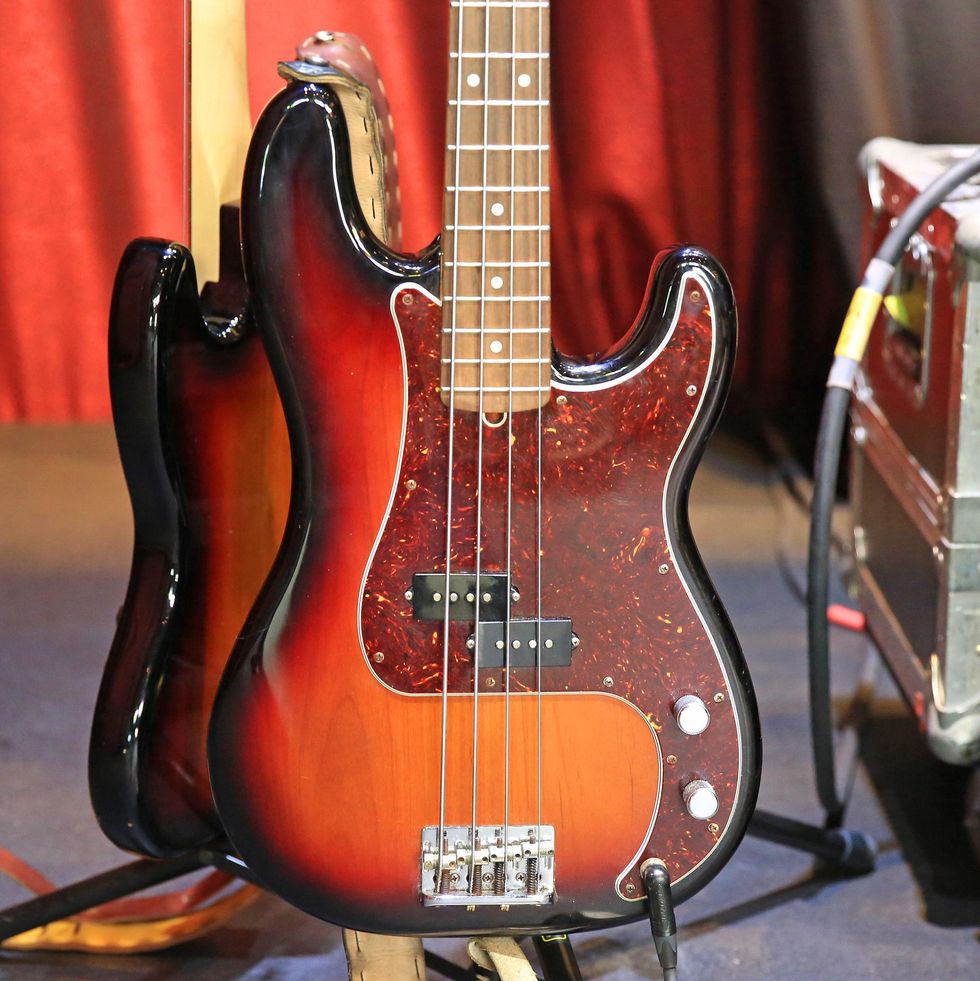
“I’ve always thought the Fender P bass was the industry workhorse,” allows Schloss. His beastly battle axe is an American Professional II Precision bass that has a ’63 P neck profile, the company’s new V-Mod II Precision Bass split-coil pickup, and a Hi-Mass Vintage bridge. Schloss used to play roundwound strings, but he would constantly break them and do some serious damage to his hands. He made the switch to flatwounds in the ’90s. The string snaps significantly reduced and he found their sound sits better in the mix, making it more distinct and outside the guitar’s lane.
During the Rundown, he offers up two vintage tidbits: After the band’s last show in 2011, he sold his 1964 P bass to the Hard Rock International, and the second is that he loaned a black 1964 Fender Stratocaster to producer Guy Seyffert, who’s on the road with Roger Waters and has been using it onstage. Schloss says it was a gift from Joe Strummer and once belonged to Sid Vicious, and then Steve Jones.
Slice ’n’ Dice
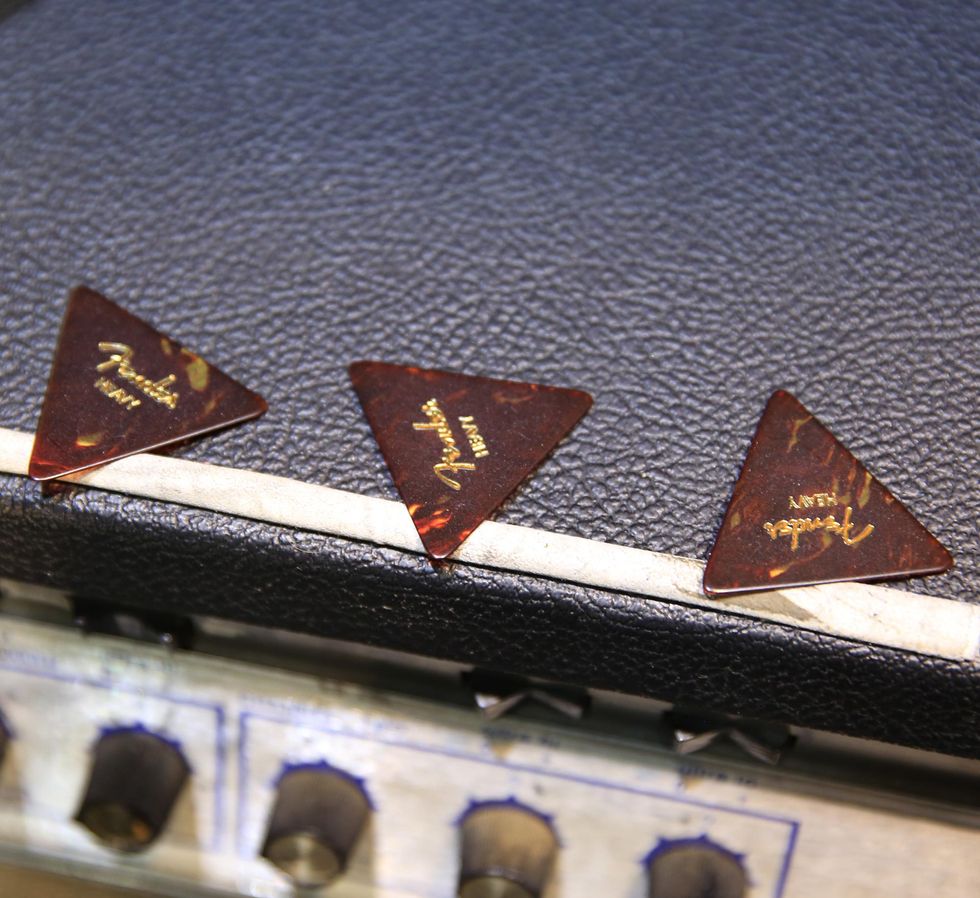
Schloss swears by Fender Classic Celluloid triangle picks (355 shape). As he shreds off a tip, he rotates the pick around for another angle. As he says, “It has a lot more click for the buck.”
Close Enough for Jazz
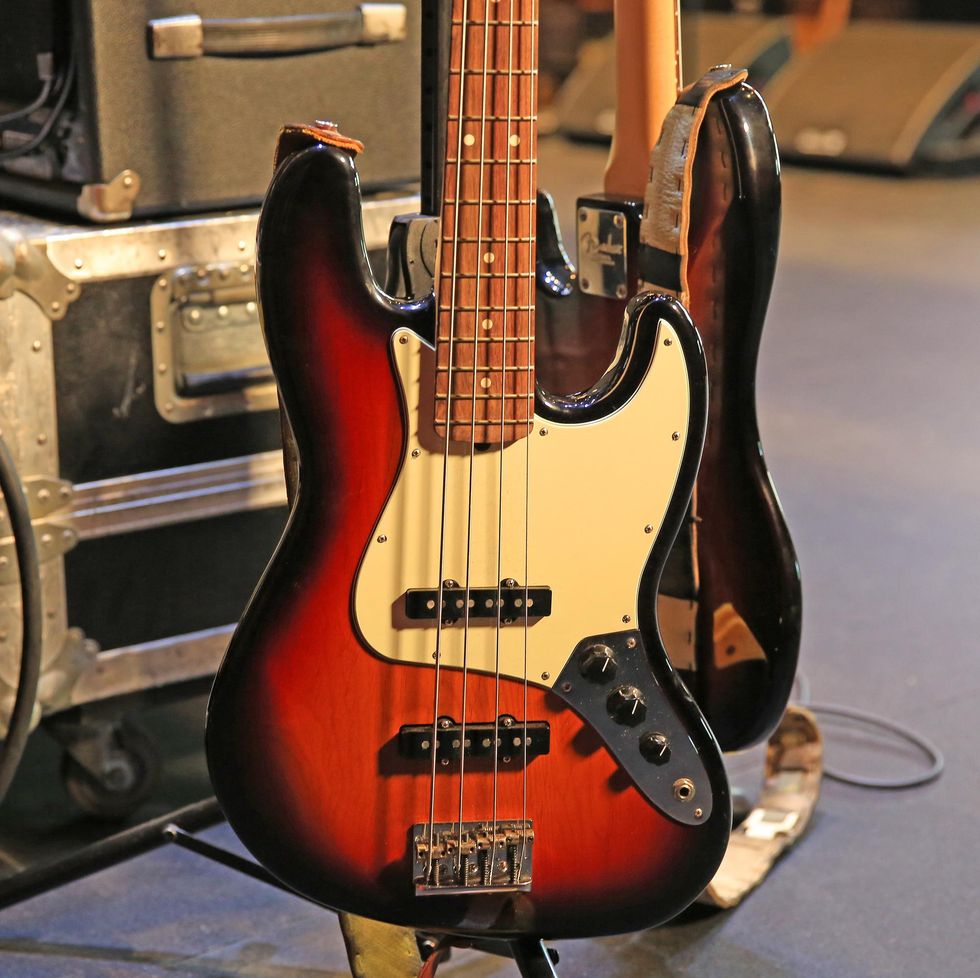
For backup purposes, he totes along this American Professional II Jazz bass that also has flatwounds. Schloss acknowledges that the thinner neck isn’t his favorite and wishes he’d brought out a pair of Ps.
No Take Backs!
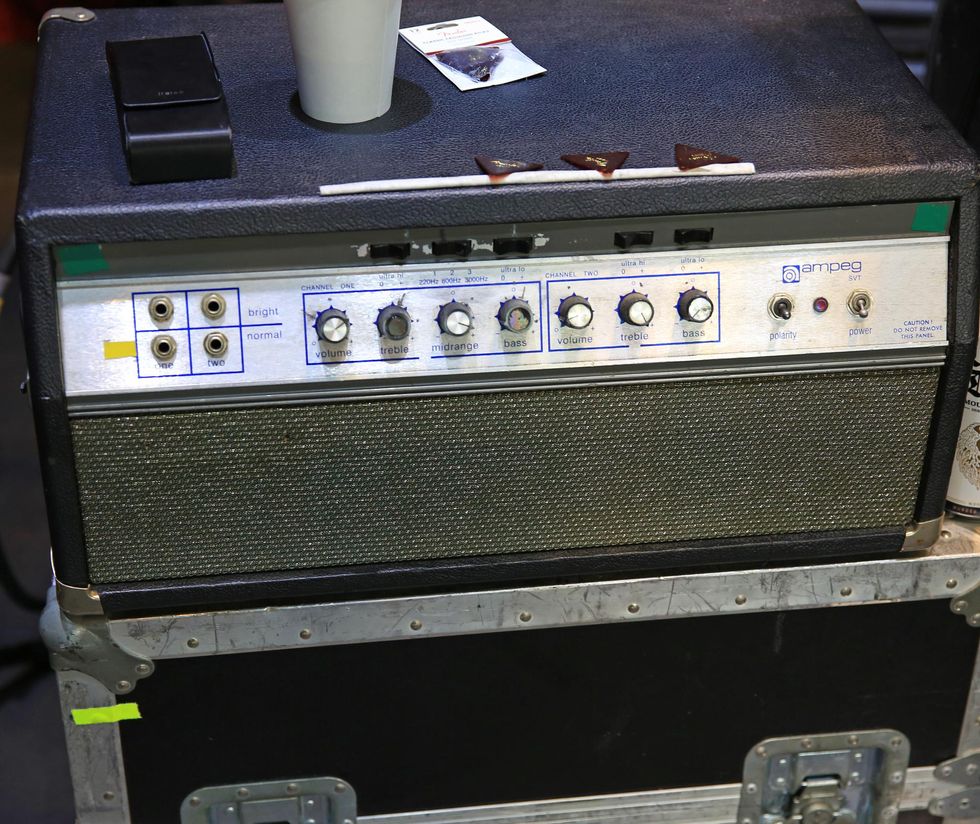
Probably as collateral on that ’64 Strat, Guy Seyffert loaned Schloss an early ’70s blue-line Ampeg SVT that hits a slant-back Ampeg SVT-810E that belongs to one of the tour’s openers. It’s up for debate who has the better end of the deal.
Solid Greg, Solid Guitar
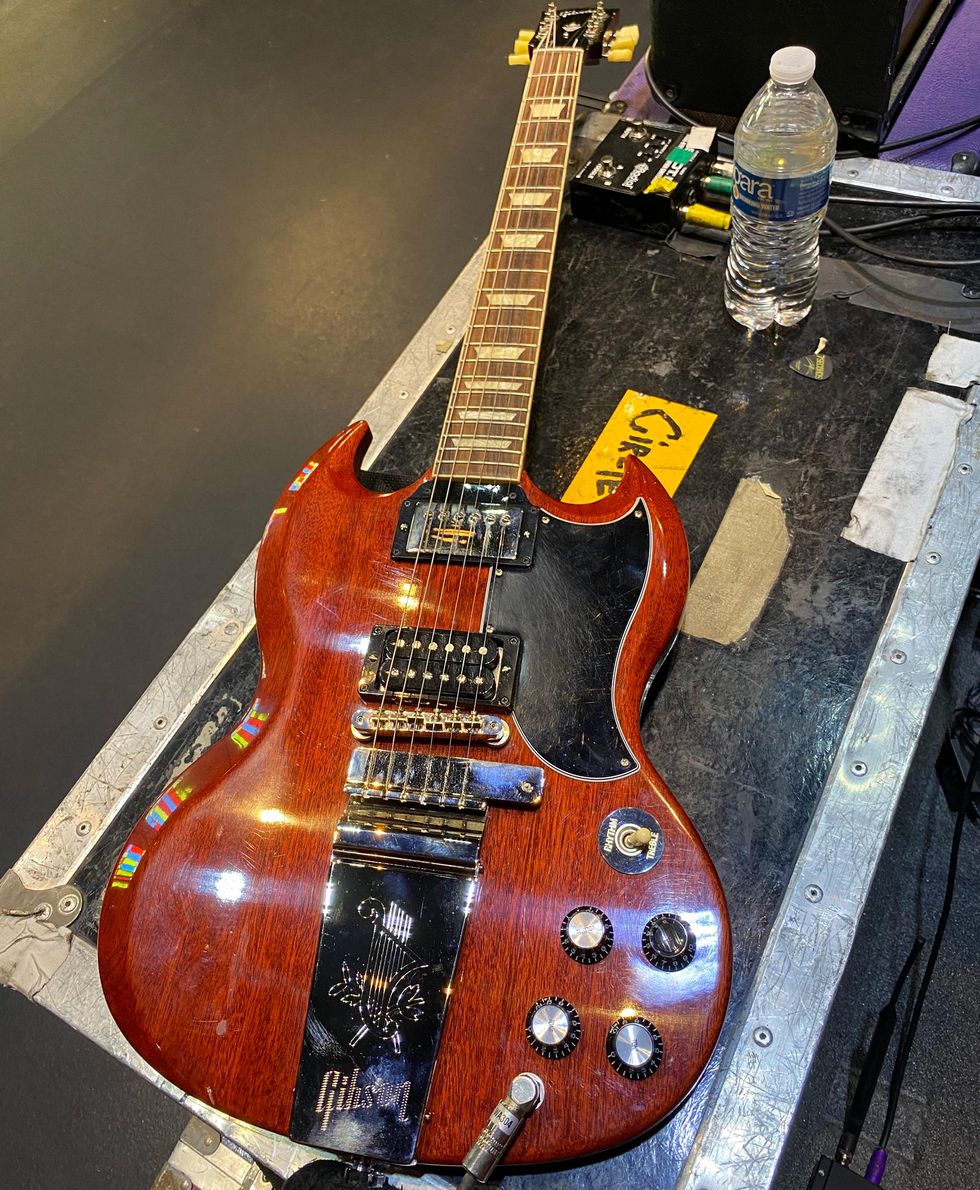
If you’ve seen Greg Hetson thrashing onstage with any of his numerous bands, you’ve seen him rocking a Gibson SG. For the Circle Jerks’ world tour, he brought out this recent SG Standard ’61 Maestro Vibrola reissue with a mahogany body, a SlimTaper mahogany neck paired with a rosewood fretboard, and an ABR-1 Tune-o-matic bridge. It originally came with a set of BurstBucker 61s, but Hetson removed the T pickup (bridge) and dropped in an uncovered Seymour Duncan Alnico II Pro humbucker.
Moshing With Marshall
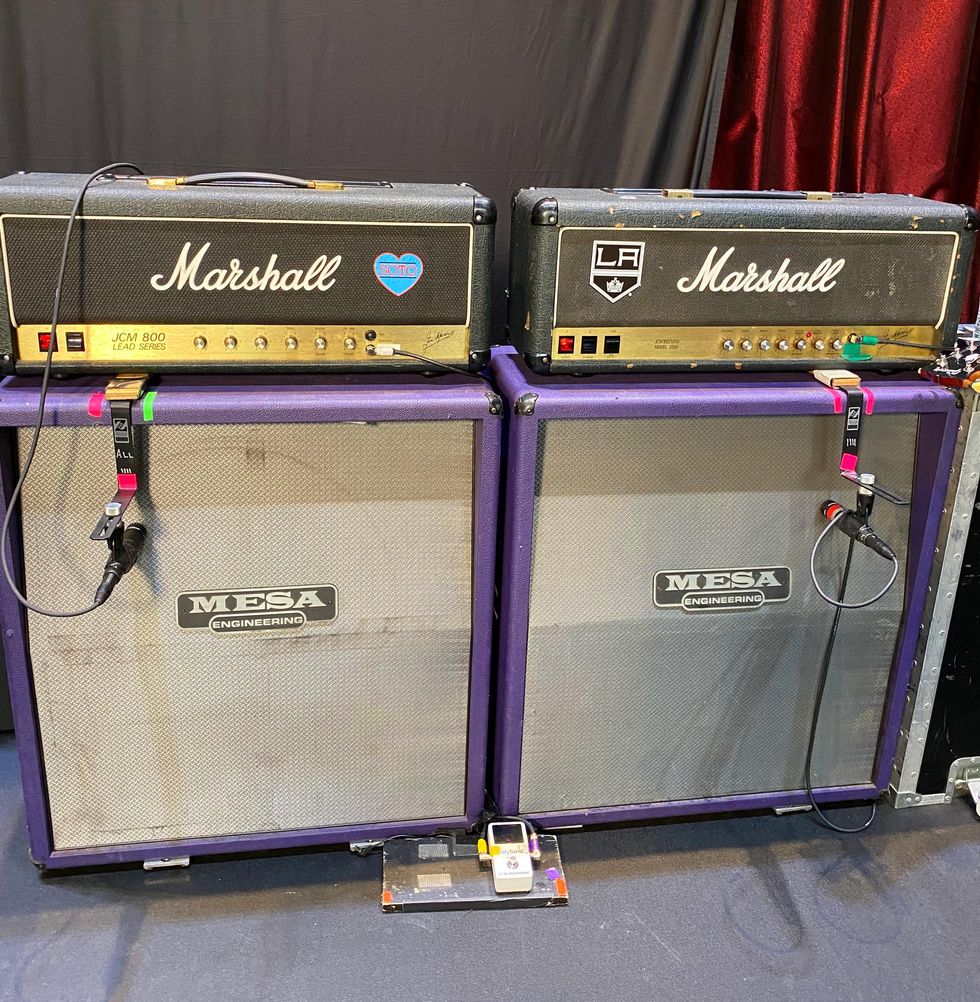
Hetson loaded up a pair of 1980s Marshall JCM800s for this run. On the left is an early-’80s 2203 model, while the other is a late-’80s 2555. Both run into their own Mesa/Boogie Rectifier Traditional slant 4x12 loaded with rear-mounted Celestion Vintage 30s. On the floor, you’ll notice Hetson’s lone “effect”: a TC Electronic PolyTune.
We’ve Seen This Before
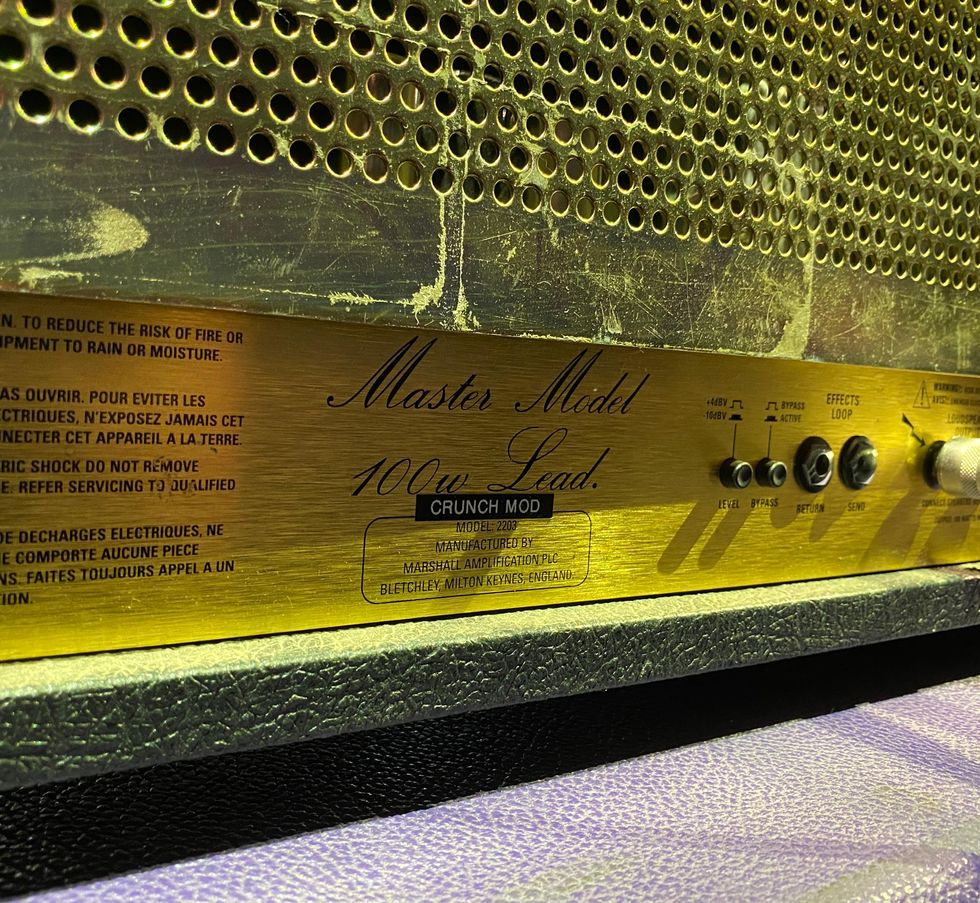
The 2203 was overhauled with the venerable “crunch” mod by L.A. Sound Design’s late Martin Golub. If that tone tweak sounds familiar, then this will surely ring a bell, as the “crunch” mod is also referred to as the “Dookie” mod—widely known for residing in Green Day frontman Billie Joe Armstrong’s “Pete” Marshall 100-watt 1959 SLP reissue head. (The much-revered Golub passed away in 2021.)




![Rig Rundown: Russian Circles’ Mike Sullivan [2025]](https://www.premierguitar.com/media-library/youtube.jpg?id=62303631&width=1245&height=700&quality=70&coordinates=0%2C0%2C0%2C0)




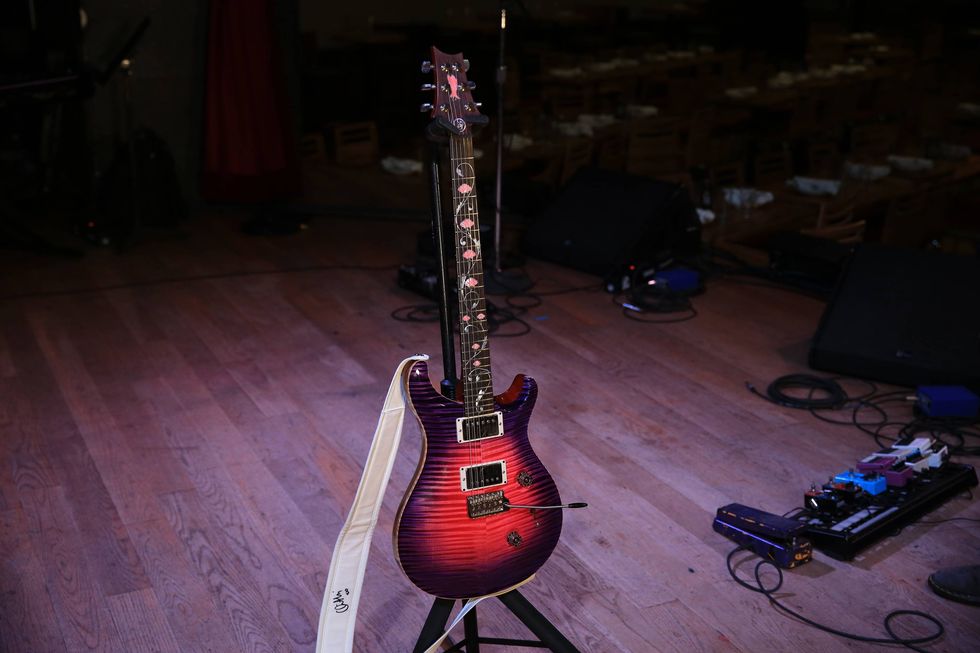
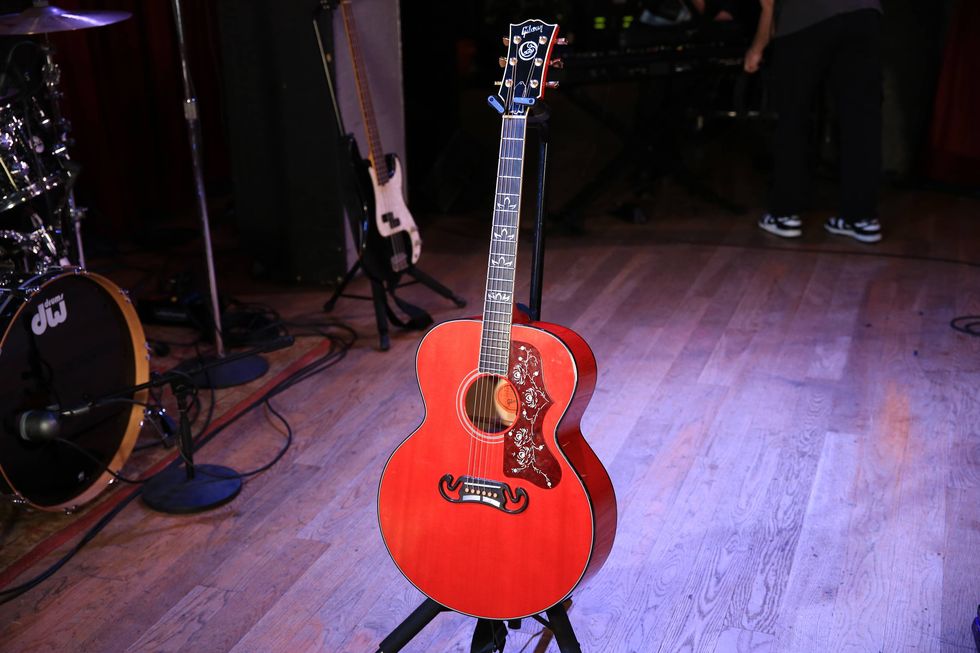
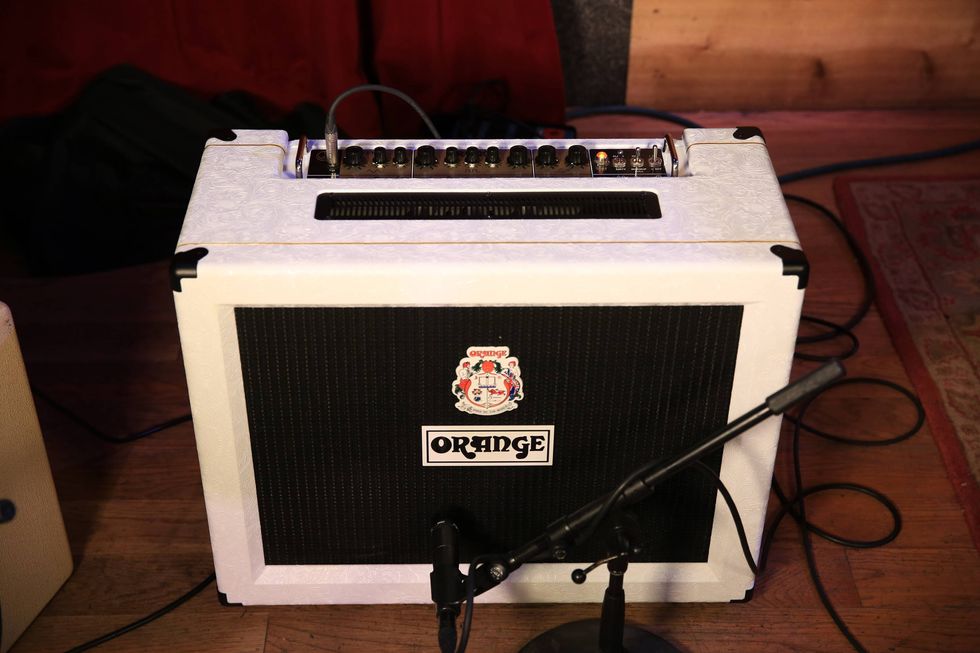
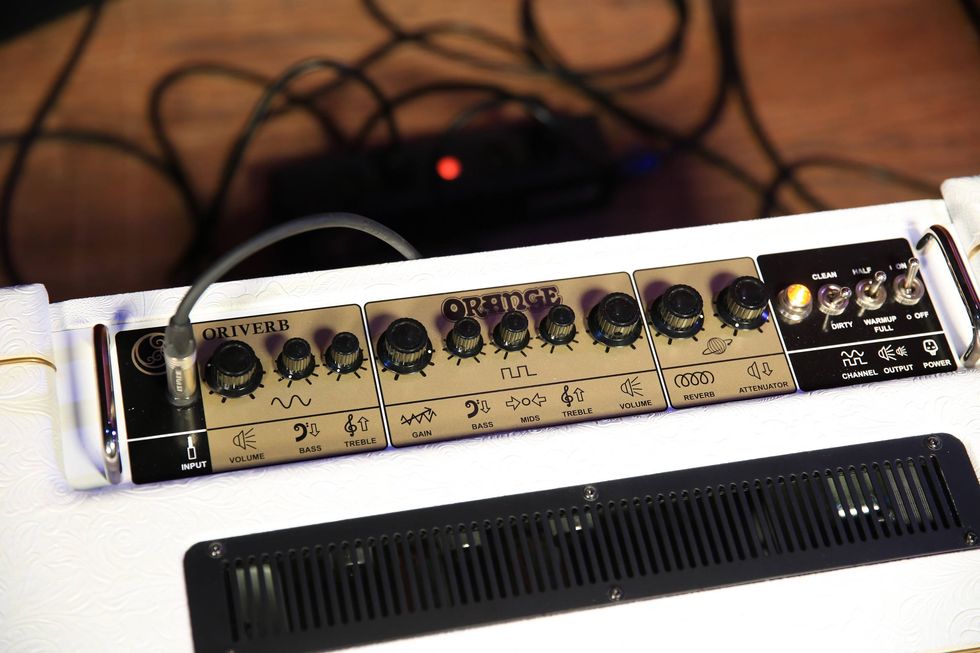
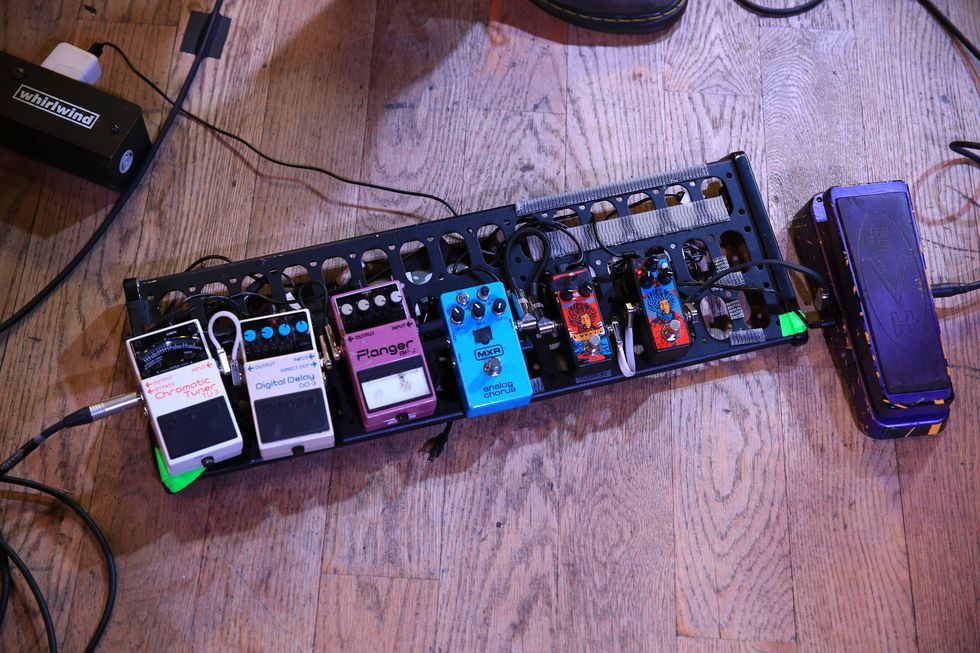







![Rig Rundown: AFI [2025]](https://www.premierguitar.com/media-library/youtube.jpg?id=62064741&width=1245&height=700&quality=70&coordinates=0%2C0%2C0%2C0)












 Shop Scott's Rig
Shop Scott's Rig







 Zach loves his Sovtek Mig 60 head, which he plays through a cab he built himself at a pipe-organ shop in Denver. Every glue joint is lined with thin leather for maximum air tightness, and it’s stocked with Celestion G12M Greenback speakers.
Zach loves his Sovtek Mig 60 head, which he plays through a cab he built himself at a pipe-organ shop in Denver. Every glue joint is lined with thin leather for maximum air tightness, and it’s stocked with Celestion G12M Greenback speakers.







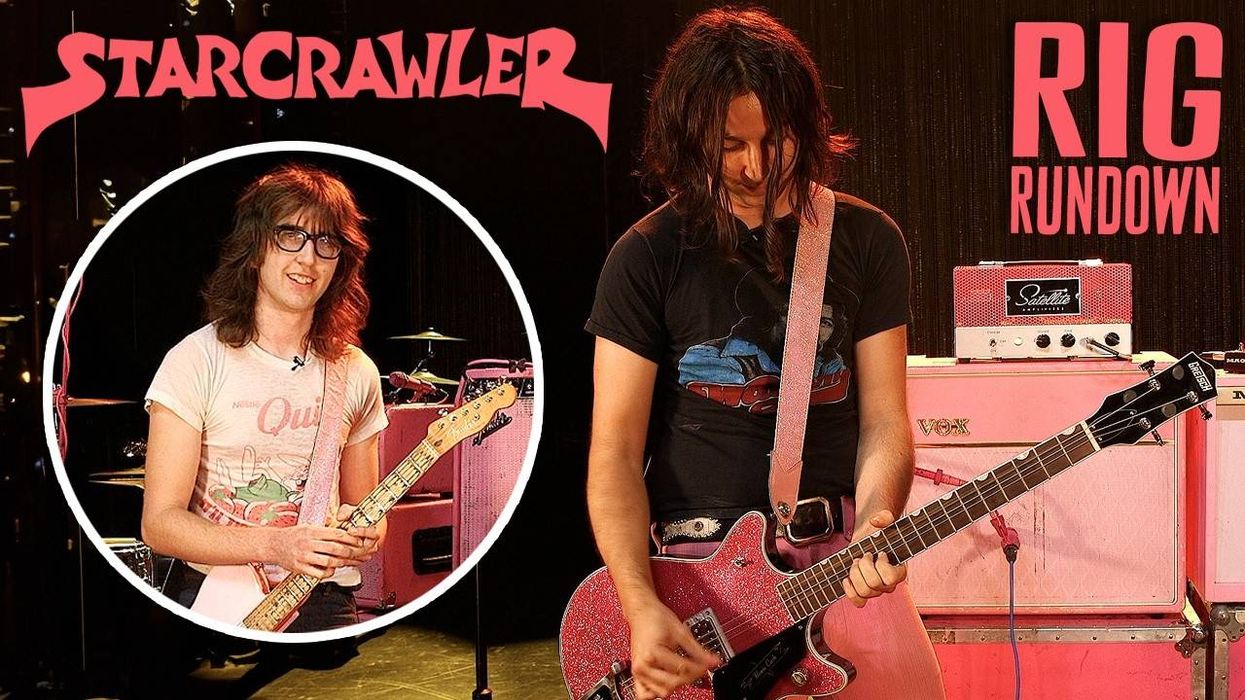
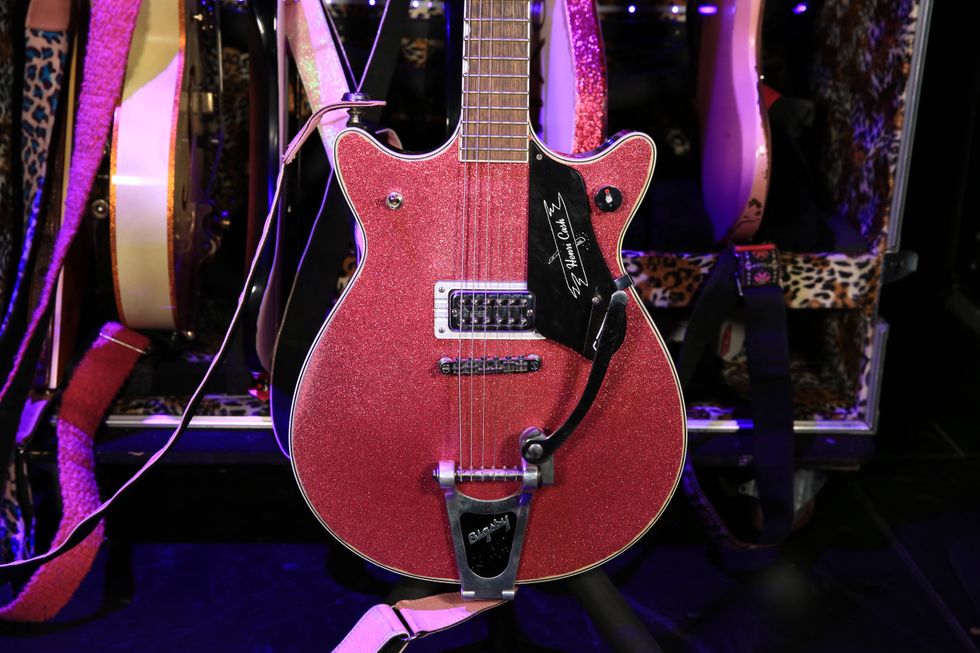
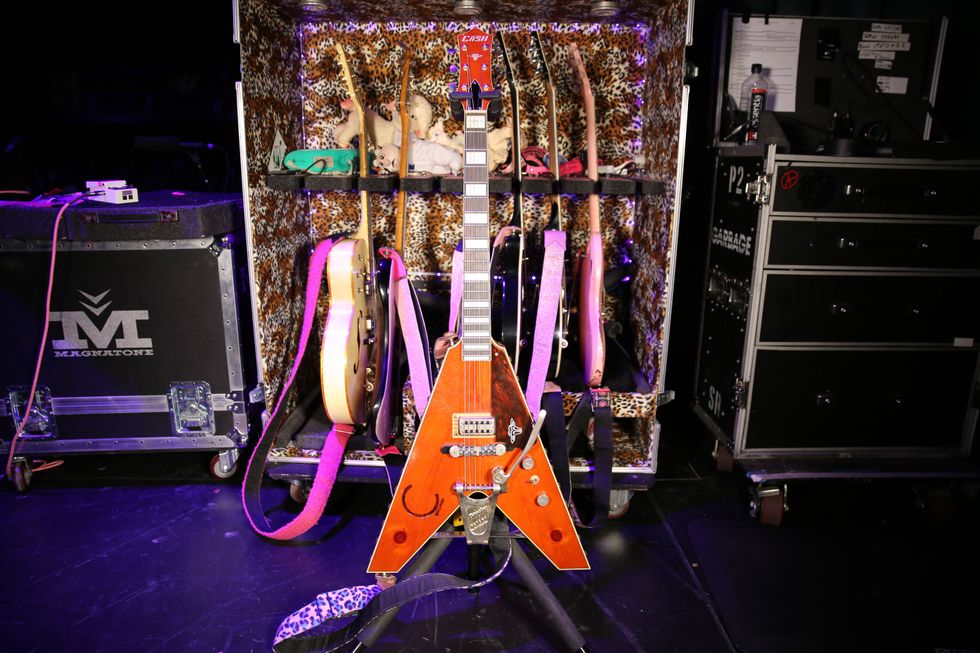
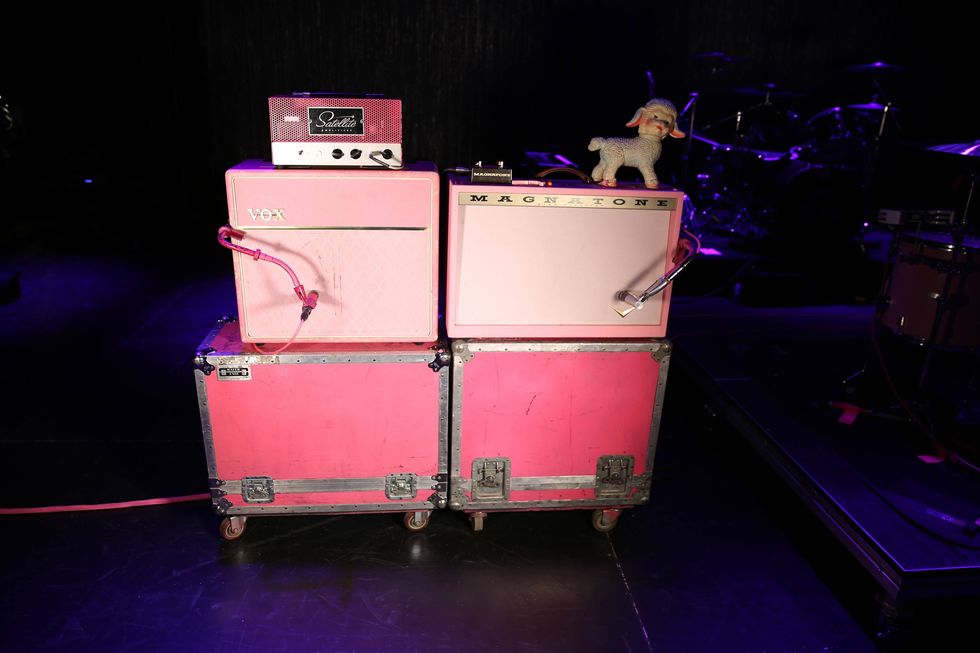
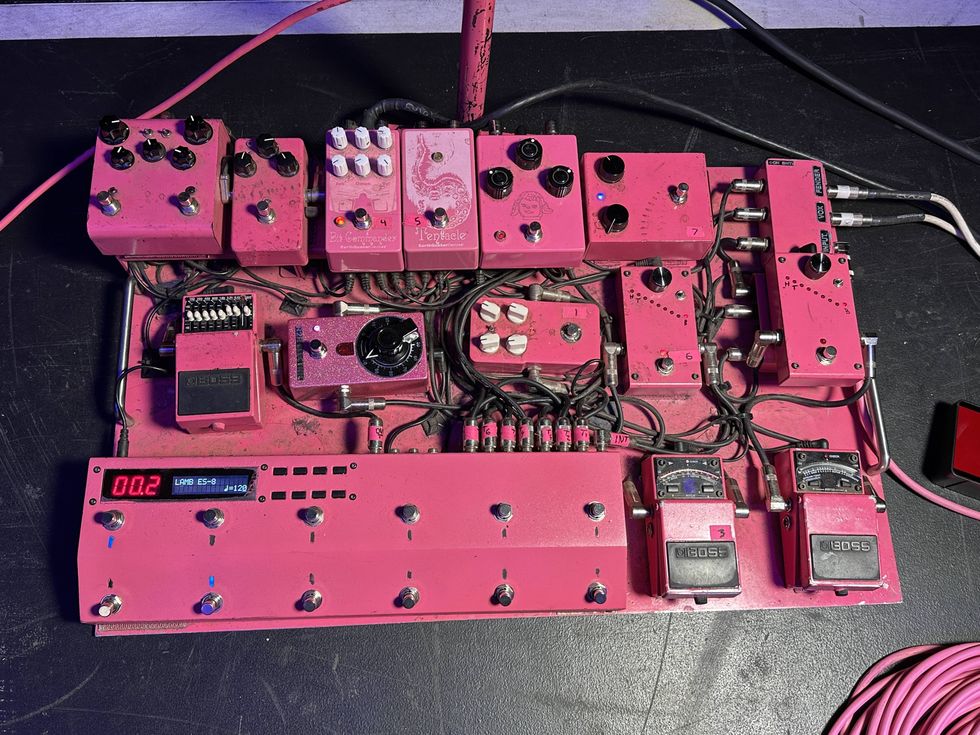
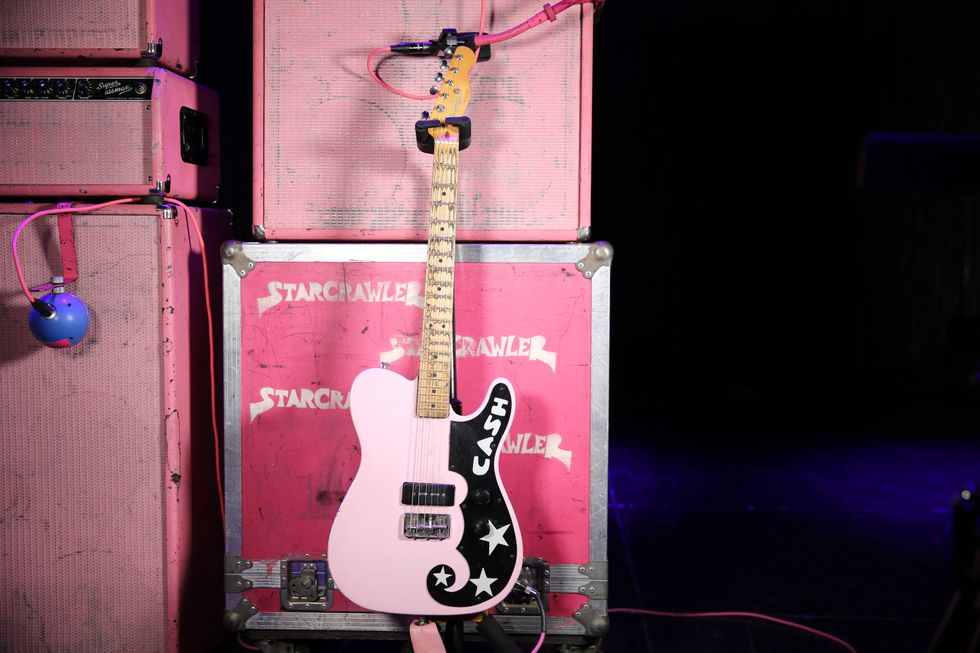
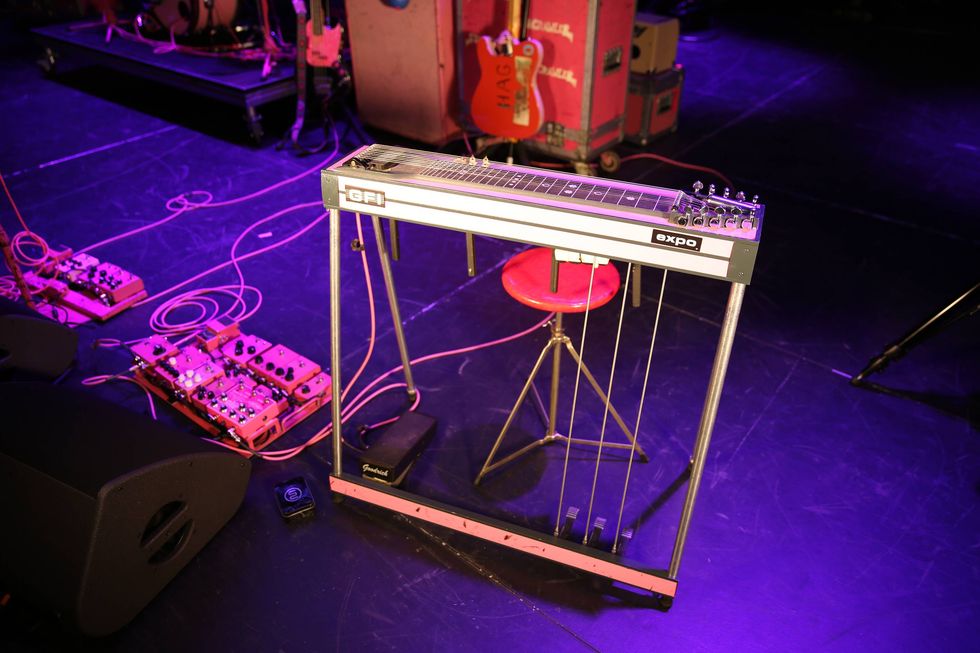

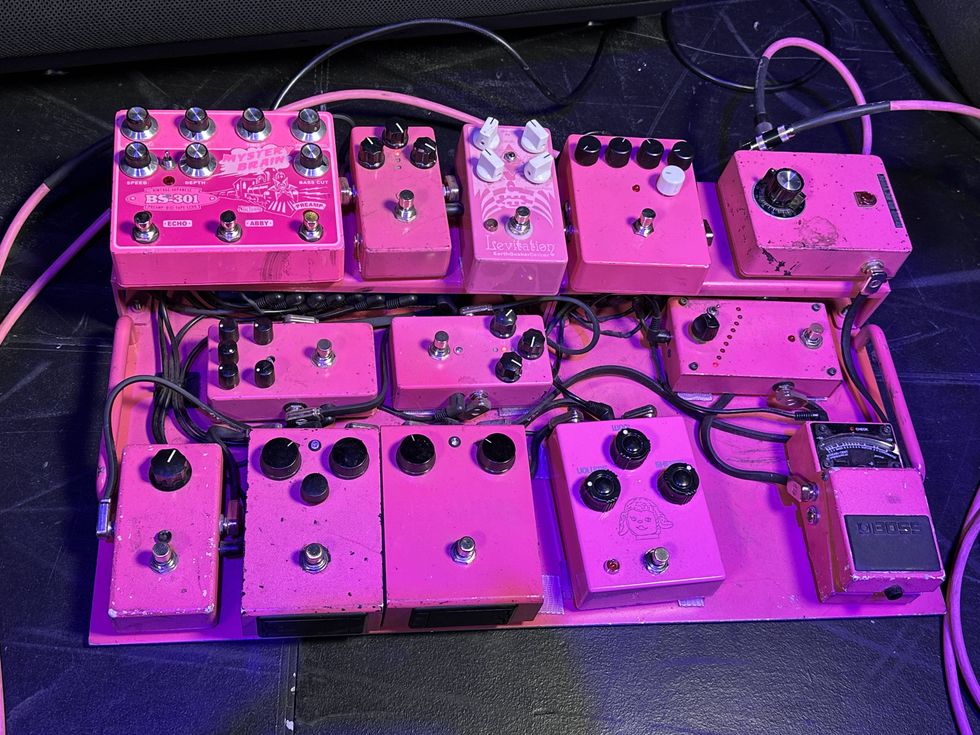

![Devon Eisenbarger [Katy Perry] Rig Rundown](https://www.premierguitar.com/media-library/youtube.jpg?id=61774583&width=1245&height=700&quality=70&coordinates=0%2C0%2C0%2C0)






